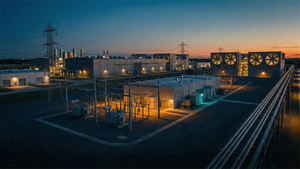
A new era of ocean exploration is dawning, propelled by groundbreaking innovations in advanced seafloor mapping technologies. At the forefront of this revolution are dynamic public-private partnerships and the transformative power of Artificial Intelligence (AI), which are collectively accelerating our understanding of the vast, mysterious underwater world. These advancements are not merely pushing the boundaries of discovery but hold immediate and profound significance for critical fields such as oceanography and climate science, promising to unlock secrets vital to the health of our planet.
The collaborative spirit between governmental bodies, academic institutions, and private enterprises, coupled with sophisticated AI algorithms, is enabling an unprecedented level of detail and efficiency in mapping the ocean floor. From high-resolution multibeam sonar to autonomous underwater vehicles (AUVs) and satellite altimetry, these technological leaps are providing a comprehensive view of underwater environments. The integration of AI for predictive modeling and automated data interpretation is proving to be a game-changer, allowing researchers to process colossal datasets, identify intricate geological and biological features, and ultimately enhance our ability to monitor, protect, and comprehend the ocean's crucial role in Earth's systems.
Decoding the Deep: Technical Advancements in Seafloor Mapping
The recent surge in seafloor mapping capabilities is a testament to significant technical advancements that are redefining what's possible beneath the waves. Modern multibeam sonar systems, for instance, have evolved beyond simple depth measurements to simultaneously map seafloor topography and the water column, revealing features like gas seeps and oil plumes with unparalleled clarity. This provides a holistic understanding of underwater environments, capturing complex bathymetry at resolutions previously unattainable.
A cornerstone of this technological leap is the proliferation of autonomous platforms. Autonomous Underwater Vehicles (AUVs), Remotely Operated Vehicles (ROVs), and Autonomous Surface Vehicles (ASVs) like the Saildrone Surveyor are now capable of independent, long-duration missions, collecting vast quantities of bathymetric and environmental data across expansive and often hazardous deep-sea regions. These platforms, often equipped with advanced sensors such as deep-ocean Lidar (Light Detection and Ranging) systems, can reconstruct three-dimensional terrain with centimeter-scale precision, critical for detailed imaging of geological formations and biological communities. Technologies like Wide Swath Subsea LiDAR (WiSSL) and MiDAR are extending these capabilities, using high-intensity laser pulses to penetrate deeper and provide unprecedented clarity. Furthermore, underwater hyperspectral imaging, as operationalized by companies like planblue, offers quicker, more efficient, and more detailed insights into seabed composition and ecosystems, surpassing traditional photographic methods in analytical depth.
These innovations fundamentally differ from previous approaches by offering a combination of high resolution, extensive coverage, and automated data acquisition and processing. Older methods often relied on sparse soundings, limited-range submersibles, or less sophisticated sonar, resulting in fragmented and lower-resolution maps. The current generation of technology integrates diverse data streams – from satellite altimetry, which indirectly maps the seafloor by measuring sea surface height variations, to direct sonar and lidar measurements – into cohesive, high-definition models. Initial reactions from the AI research community and industry experts have been overwhelmingly positive, with many hailing these advancements as pivotal for closing the knowledge gap about the 80% of the ocean floor that remains unmapped. Experts emphasize that the sheer volume and complexity of data generated necessitate AI for effective analysis, making AI not just an enhancement but an indispensable component of modern ocean exploration.
Corporate Currents: Impact on AI Companies, Tech Giants, and Startups
The innovations in advanced seafloor mapping, particularly those driven by AI and public-private partnerships, are creating significant ripples across the corporate landscape, poised to benefit a diverse array of AI companies, tech giants, and specialized startups. Companies at the forefront of autonomous systems, sensor technology, and big data analytics stand to gain substantial strategic advantages.
Firms specializing in autonomous marine vehicles, such as Saildrone (private), and those developing advanced sonar and lidar systems, like Kongsberg Maritime (OSL: KMASA) and Teledyne Technologies (NYSE: TDY) via its Teledyne RESON brand, are direct beneficiaries. Their hardware and software are foundational to these mapping efforts. Furthermore, companies providing AI-powered data processing and interpretation solutions, such as planblue (private) for underwater hyperspectral imaging and AI analysis, are finding increasing demand for their specialized expertise. These companies are not just providing tools but are becoming integral partners in projects like the Nippon Foundation-GEBCO Seabed 2030, contributing vast amounts of proprietary data and analytical capabilities to the global effort.
The competitive implications for major AI labs and tech companies are significant. While not always directly involved in the hardware, tech giants with strong AI research arms, like Google (NASDAQ: GOOGL), Microsoft (NASDAQ: MSFT), and NVIDIA (NASDAQ: NVDA), could see increased demand for their cloud computing infrastructure and machine learning platforms to process and store the massive datasets generated. Their expertise in developing sophisticated AI algorithms for image recognition, pattern detection, and predictive modeling is highly transferable to marine data analysis. Startups focused on niche applications, such as AI-driven anomaly detection in bathymetry or automated classification of marine habitats, are finding fertile ground for innovation and potential acquisition targets for larger players. This development could disrupt existing services that rely on older, less efficient mapping techniques, pushing them towards adopting these advanced AI-driven solutions to remain competitive. The market positioning for companies that can effectively integrate AI with robust marine technology is strengthening, offering strategic advantages in government contracts, scientific research grants, and commercial applications like offshore energy and cable laying.
Charting a Deeper Understanding: Wider Significance and Global Impact
The advancements in AI-powered seafloor mapping extend far beyond technical novelty, fitting into the broader AI landscape as a prime example of how machine intelligence can tackle complex, real-world scientific challenges. This development highlights the growing trend of AI being deployed for environmental monitoring, scientific discovery, and resource management, moving beyond consumer applications into critical global initiatives. The impacts are wide-ranging, touching upon everything from fundamental scientific understanding to practical applications in climate resilience and conservation.
For oceanography, detailed seafloor maps are instrumental in understanding Earth's geological processes, including plate tectonics and the formation of marine habitats. This enhanced knowledge directly contributes to more accurate models of ocean circulation and mixing, which are profoundly influenced by underwater topography and are crucial for understanding heat and nutrient distribution. In climate science, the significance is even more pronounced. Precise bathymetric data is essential for improving climate change prediction models, as seafloor features influence deep-sea currents that regulate global climate patterns. Sediment composition, revealed through detailed mapping, offers invaluable insights into past climate responses, helping scientists predict future changes, including sea-level rise and the dynamics of tsunamis. The ability of AI to interpret these vast datasets allows for more granular and accurate inputs into Earth System Models, addressing a critical gap in our current understanding.
However, potential concerns also accompany this progress. The dual-use nature of advanced mapping technologies raises questions about national security and sovereignty, as detailed maps could have military applications. Furthermore, the sheer volume of data being collected presents challenges in terms of storage, accessibility, and the computational resources required for processing, potentially exacerbating the digital divide between well-resourced nations and those with fewer capabilities. Comparisons to previous AI milestones, such as breakthroughs in natural language processing or computer vision, underscore the maturity of AI now being applied to highly specialized scientific domains. This marks a shift from general-purpose AI development to targeted applications that leverage AI's strengths in pattern recognition and predictive analytics to solve specific, grand challenges. The ethical implications of AI-driven exploration, particularly concerning data ownership and the potential for commercial exploitation of newly discovered resources, also warrant careful consideration.
Horizon Scanning: Future Developments and Uncharted Territories
The trajectory of advanced seafloor mapping, fueled by AI and collaborative partnerships, points towards exciting near-term and long-term developments that promise to further revolutionize our interaction with the ocean. In the near future, we can expect to see even greater integration of diverse sensor data, leading to hyper-resolution 4D maps that not only detail topography but also environmental parameters like temperature, salinity, and biodiversity over time. AI will play an increasingly sophisticated role in real-time data analysis aboard autonomous platforms, enabling on-the-spot decision-making for more efficient mission planning and adaptive sampling. Swarm robotics, where multiple AI-powered marine robots cooperatively map vast areas, is on the horizon, promising unprecedented speed and coverage.
Potential applications and use cases are expanding rapidly. Beyond fundamental scientific research, these technologies will enhance navigational safety for shipping, optimize routes for submarine cable laying, and improve the siting and monitoring of offshore energy infrastructure. In conservation, AI-driven mapping will be crucial for identifying and protecting vulnerable marine habitats, monitoring the health of coral reefs, and tracking marine life migration patterns. The ability to predict ocean currents and even underwater volcanic activity through AI models will bolster disaster preparedness and climate change mitigation strategies. Experts predict a future where citizen science plays a larger role, with AI tools democratizing marine research by making data analysis more accessible, allowing broader participation in ocean discovery.
However, several challenges need to be addressed to fully realize this potential. The development of robust, long-endurance autonomous systems capable of operating in extreme deep-sea environments remains a technical hurdle. Ensuring interoperability and standardization across different mapping technologies and data formats is crucial for seamless data integration. Furthermore, the ethical frameworks surrounding data ownership, access, and the potential commercial exploitation of newly discovered marine resources will require careful global deliberation. Experts predict that the next decade will see a significant portion of the remaining unmapped seafloor finally revealed, transforming our understanding of the planet and providing critical data for navigating the challenges of climate change and environmental sustainability.
Deep Dive Debrief: A New Era of Ocean Discovery
The innovations in advanced seafloor mapping technologies, powered by the synergy of public-private partnerships and Artificial Intelligence, mark a pivotal moment in our quest to understand Earth's final frontier: the deep ocean. This confluence of collaboration and computational power is not merely enhancing our ability to chart the unknown but is fundamentally reshaping the fields of oceanography and climate science, providing unprecedented insights into the planet's most critical and least understood ecosystem.
The key takeaways from this revolution are manifold. Firstly, the sheer scale of the challenge—mapping 80% of the unmapped ocean floor—necessitates the combined resources, expertise, and data sharing facilitated by public-private partnerships like The Nippon Foundation-GEBCO Seabed 2030 Project. Secondly, AI is not just an auxiliary tool but an indispensable engine, enabling the processing of colossal datasets, automating complex interpretations, and powering the next generation of autonomous exploration vehicles. This allows for high-resolution, comprehensive mapping that was previously unimaginable. Finally, the immediate and long-term implications for climate science, marine conservation, and sustainable resource management are profound, offering critical data to inform global strategies for a changing planet.
This development stands as a significant milestone in AI history, demonstrating the technology's capacity to drive scientific discovery on a global scale. It underscores a shift towards AI as a foundational technology for environmental intelligence, moving beyond theoretical models to practical, impactful applications. As we look to the coming weeks and months, the focus will be on the continued integration of new sensor technologies, the deployment of more sophisticated autonomous systems, and the ongoing efforts to standardize and democratize access to the burgeoning volume of seafloor data. The journey to fully map our oceans is far from over, but with AI and collaborative spirit guiding the way, we are closer than ever to unveiling the deep sea's most profound secrets and securing a more informed future for our planet.
This content is intended for informational purposes only and represents analysis of current AI developments.
TokenRing AI delivers enterprise-grade solutions for multi-agent AI workflow orchestration, AI-powered development tools, and seamless remote collaboration platforms.
For more information, visit https://www.tokenring.ai/.





